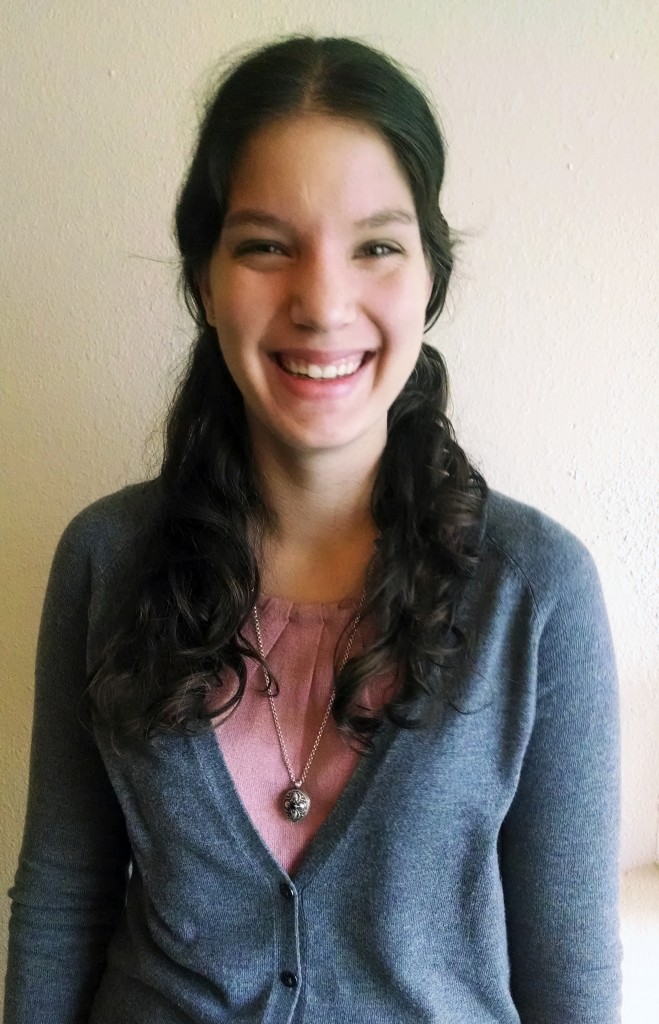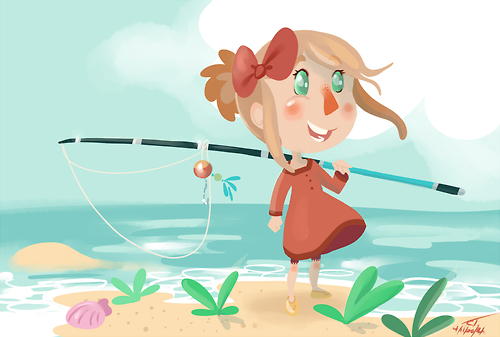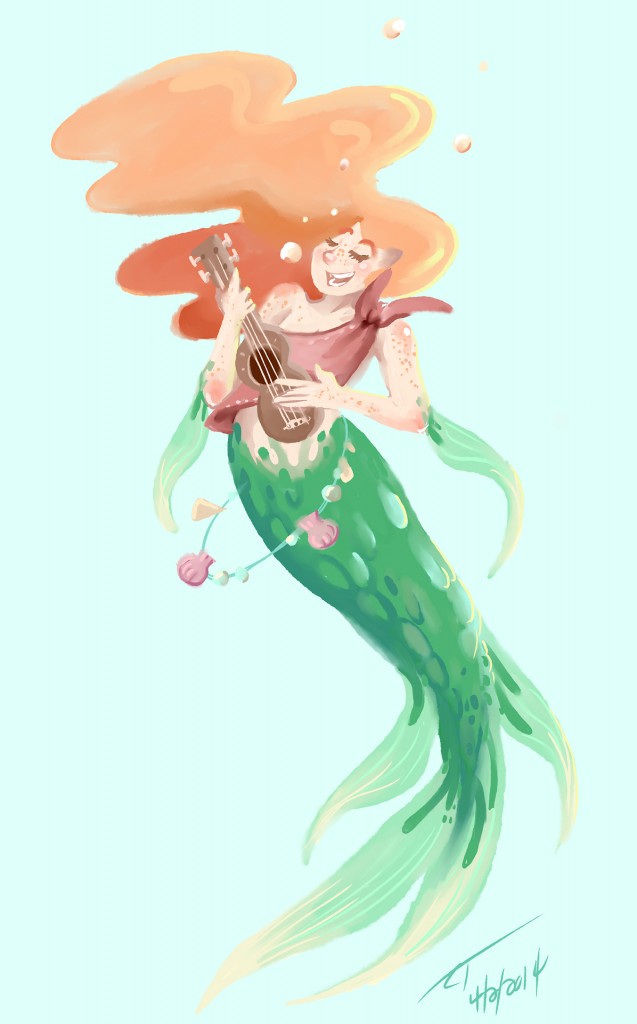ILLUSTRATOR INTERVIEW

Catherine Toennisson Portfolio
First, tell us a little about who you are and how you became an artist.
My name is Catherine Toennisson, or Cat for short. I’m pretty tall and pretty awkward. I like video games, coffee and nature. I can be lazy, but I like to work hard. I try my best to be nice to everyone! I’ve been an artist since I was old enough for arts and crafts, but didn’t realize why I wanted to be an artist until late in high school.
Did you know from an early age you wanted to be an illustrator? Who influenced you as a child and prompted you to pursue a career as an artist?
I’ve gone through a lot of changes in my art! When I was little, I wanted to paint like Leonardo da Vinci. Then I saw the behind-the-scenes tape on The Lion King and decided that I wanted to become an animator for Disney. Somewhere around middle and high school I got really into graphic novels and web comics. I started studying the work of Hayao Miyazaki, who is still my hero to this day. He had a great influence on how I view stories and animation. I read and referenced every one of his film art books. I enjoyed and studied every animation he ever directed or worked on, even the old ones from back where he was beginning. I read his biography and his graphic novel “Nausicaa of The Valley of the Wind” and “Shuna no Tabi” from cover to cover. I even studied his storyboard. I have a couple small printed collections of his storyboards from Nausicaa. His work lead me to others – Isao Takahata, for example and onward to other studios like Pixar, Blue Sky, and Laika. Now I’m writing my own webcomic and have taken quite an interest in freelancing. I’ve been illustrating children’s books, comics, graphic novels and trying to get my foot in the door of the animation industry as a storyboard artist. The path to where I am now has been winding, but I’ve learned through all of it that it’s the story and the art together that’s important, whether it’s animation, comics, or illustration. It’s about telling the story; and balance between the two that makes a story good. I still have a lot to learn, a lot of experiences to have and a lot of mistakes to make. A couple months ago I met Tom Bancroft, the animator of Simba from Lion King and Mushu from Mulan at a convention. I gave him my card and bought a signed drawing from him. But I was too nervous to tell him how much The Lion King influenced me as a child. I hope one day, when I’m wiser, to meet Hayao Miyazaki and thank him for how much his work has influenced and taught me!
This interview first appeared here
http://alanamunroauthor.com
Who had been a constant support throughout your journey as an artist?
I’m so lucky to have my family and friends support me being an artist! My mom and dad have always been a constant support, making sure I always have what I need and encouraging me! My older sister is a huge inspiration, perusing her dream of being an art teacher. I really do have a great family and my boyfriend claims he’s my biggest fan. It’s incredibly tough for an artist to have no support. I’ve met countless artists who say that their parents don’t want them to pursue art because they wouldn’t make any money. This is perfectly logical, but completely eliminates happiness from the formula. There are always late nights and part time jobs. There’s always a passion to pursue what you love above everything else. Art is a tough market but it’s also a big one. It’s definitely possible to make a living from your art if you keep at it!
Where did you learn to illustrate?
I went to the Art Institute of Tennessee-Nashville, but honestly, that’s not where I learned to illustrate. I learned on my own, like so many others. Illustration was a thing I did outside of classes. I freelanced a bit while going to school. I taught myself how to illustrate and do sequential art. Also, to make jewelry, dolls, paint in different medias, play a bit of guitar, cook, and tons of other stuff. You don’t learn everything from school, especially art. You just can’t! Illustration, like a lot of other things, takes a lifetime of practice. It’s something you have to constantly hone, and I’m still making mistakes.
What skill do you wish you possessed?
The ability to fly!
What does your workplace look like?
Currently I own a desktop and a Wacom tablet. I work from home and do most of my work on the computer through Photoshop and Paint Tool Sai. But I also have an easel. This is where I paint acrylics and watercolors. I also own a couple thousand sketchbooks that usually pile on top of my scanner. I sketch in mechanical pencil and ink pens usually. My workstation is often cluttered by coffee cups and I have a Rubix cube to twist while thinking.
Can you describe the processes you go through when working on an illustration from start to finish?
This was my process for Goo and Spot, and The Do Not Wiggle Riddle.
First I look at the words that go along with the illustration and get Mrs. Takaoka’s input! She often tells me what setting she’d like and what characters to use. She also lets me know if she’d like any of them doing anything in particular. The first part is just shooting ideas. Next I do a sketch, often on paper. I have a better sense of depth and drawing that way, I’ve found. I scan it in and set the size. I always make the file size two times bigger than it should be to preserve resolution. I email it after I clean it up a bit and get her opinion. During this step she lets me know what she’d like to change or add, and I tweak the sketch until it is right. After that, I ink the sketch. I use a program called Paint Tool Sai. It’s like a very simple version of Photoshop. I send in the inks to Mrs. Elsa and we tweak some more! Once that is approved, I flat color everything, often kind of messily. The colors usually take the most revisions to get right. Once all the colors are approved, I work on rendering the final piece. I clean up the colors, shade and highlight, and add detail to the parts that need it. I bring it into Photoshop for certain brushes or text. Once that is finished, I send her the final to be approved. Because of all the steps we did before, often we don’t make big changes at this point. Once the final is good to go, I send her the Photoshop file!
Are there any illustrations in Goo and Spot that were inspired by your life and your childhood?
Oh, many! I remember doing most of the things that the children do in the illustrations. Many of the children were inspired from playing with my siblings and nephew. I worked at a Girl Scout camp for a couple summers in high school, so I knew how kids act from an adult’s point of view. One page in particular- page 9, the one with all the children playing outside – is what I made a special request for. I asked if I could put my nephew in, of course. He’s the blonde playing with the ball, in the short sleeved sweater that my big sister knitted him. But then, I asked Mrs. Elsa if she’d be alright with me adding in a little girl in a wheelchair. I asked this specifically because my twin sister spent a lot of her childhood in a wheelchair, needing leg braces, back and leg surgery to combat her cerebral palsy. I remember wanting to push her around a lot. We used to play ball on the black top or jump rope. Sometimes though, I’d run off with my friends. It must have been lonely for her at times, and I wanted to put a child in the book for kids who weren’t blessed with perfect health and could relate too. Not that having braces slowed down my sister! We used to climb the 100 foot pines in my back yard. I remember doing it once the very day she got out of her cast! Crissy is all grown up now. We still look similar, but we’re very different. Her last surgery lengthened the muscles in her legs. She can walk and run now, better than ever! She loves to write and I love to draw. We still talk every day.
Does illustrating always come easily to you, or do you ever suffer from ‘illustrator’s block?
I get illustrators or artist block all the time. Sometimes it’s easy to draw something, but most of the time, it’s a struggle! I’m barely ever satisfied with my work, even when it’s finished. I still have paintings that I’ve been working on for years, haha. Sometimes I get into such a slump; I can’t paint or draw anything at all! I often go do something else when that happens, like bake a cake, go on a walk or play guitar. It’s really nerve wracking when I’m on a deadline, but often if I do that, I’m back to normal in a couple days, and get more done then I would have if I struggled through it.
What else do you like to do, other than write and illustrate books?
I like to swim, go on hikes, take photos and cook! I also like to play video games. My favorite series is The Legend of Zelda.
Where do you get inspiration for your illustrations and how have you developed your personal style?
Oh boy, this is a tough one. My inspiration I’ve found is taken from my experiences and the people around me. I’ve found that artists are copycats; we take things and tweak them, or put them together to form a particular style. Every style is different, even if they look the same (unless that person is copying because they’re lazy) but in the beginning of learning to be an artist, everyone copies. We copy our teacher’s styles, our mentors and inspirations. We copy our experiences and try to render our feelings. Over time, we put these things together. We figure out how we want our art to look like and that’s a personal style! I’m not saying all styles are the same, because they’re not. Everyone has something in their art that makes them different from the others, whether it’s the way they like to draw an eye or a tree. I look for a lot of my inspiration in nature. I like giving my art a round and organic feel. I like to emphasize facial expressions and movement. I like to put clouds in the skies I paint and varieties of plants on the ground. I like how my sketches look, showing through what I paint. That’s part of my style!
What advice do you have for children who have dreams of one day becoming an artist?
Never stop perusing your art. If it’s what you want to do, don’t ever give up! You can be good at anything as long as you practice. People all start at different levels, so don’t be discouraged if someone your age is better than you. You need to find your own unique style.

